German Army General's Pre-1943 Visor Cap (with metal insignia)
CATEGORY: Version
SKU: 20.GOR.01.01.01.01.001.001
Estimated market value:
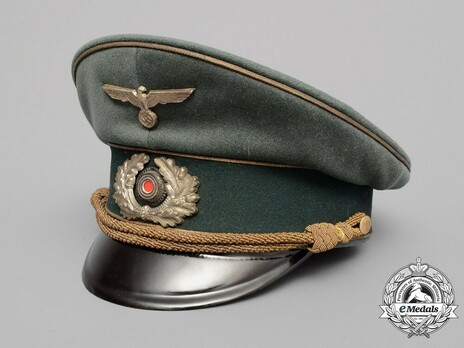
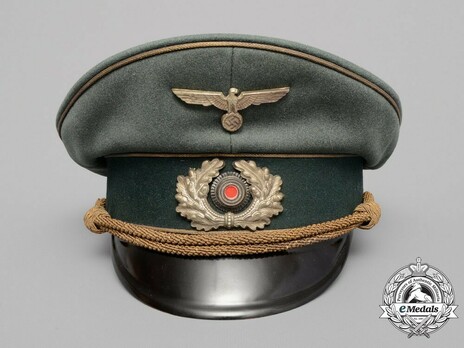
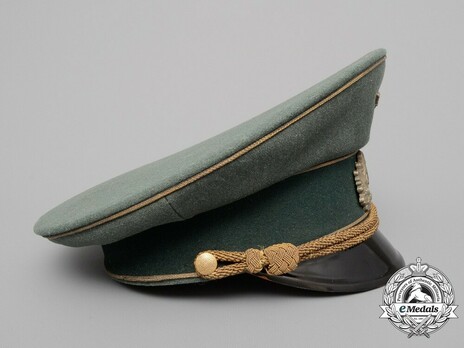
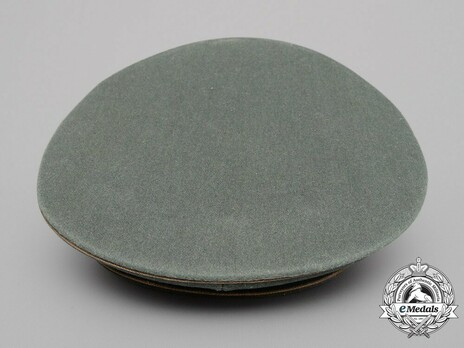
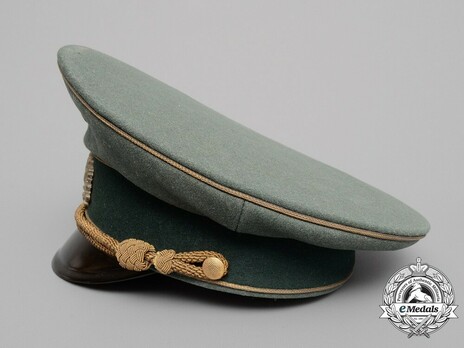
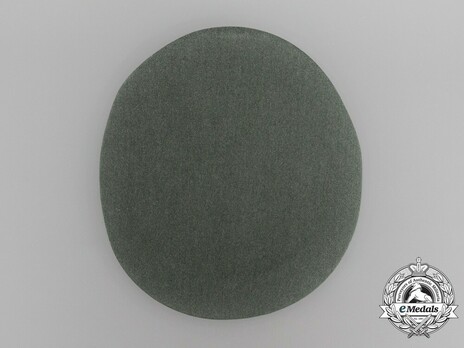
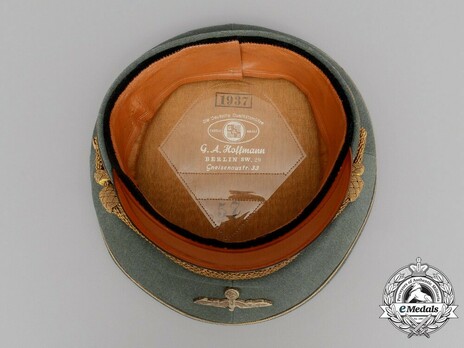
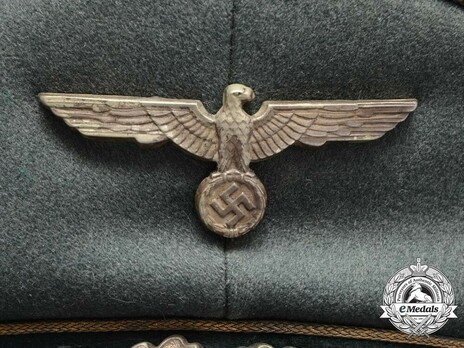
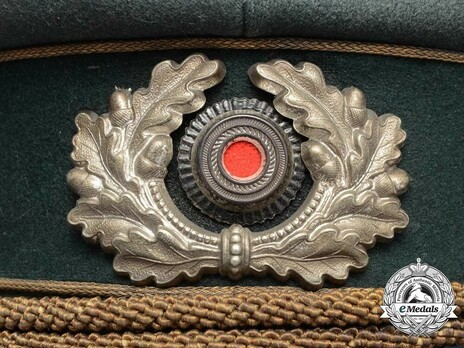
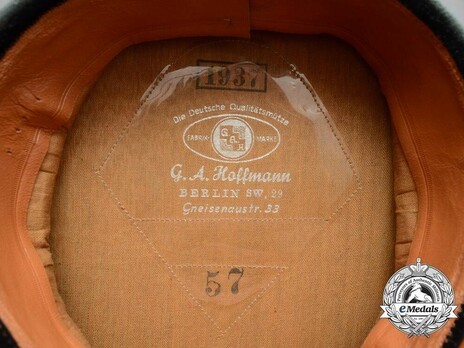
Estimated market value:
Heer General's visor exhibits three rows of gilt silver bullion wire piping, with the body of the cap fabricated from Heer (Army) green doeskin wool, featuring the classic high peak and rounded saddle-shaped sides. It has a forest green wool band around its circumference, which supports a three-piece constructed aluminum cockade on the front. The cockade has a painted black base incorporating a silvered ring and red felt centre, surrounded by a silvered wreath of oak leaves and acorns. Immediately above on the crown is an intricately detailed aluminum Germany Army (Heer) cap eagle insignia. The visor is black vulcanfibre with a rolled gold-coloured bullion cord above, in two rows, knotted in the appropriate-style on the sides and held in position via pebbled gilt posts on both sides. The underside of the visor is synthetic, crosshatched and finished in a deep tan. The tan sweatband is leather, with the two ends sewn together at the seam, with ornately patterned ventilation holes at the front, the underside size stamped in black ink "56" near the seam. There is a black velvet buffer between the sweatband and the body of the cap. The dome itself has a tan rayon liner, with a clear moisture shield over the silver inked manufacturer's stamp, marked "Die Deutsche Qualitätsmütze" (The German Quality Cap) over an oval incorporating a circle with three staggered cubes with the letters "GAH", inscribed "FABRIK-" at the left and "MARKE" at the right" (Factory Trade Mark) and maker marked "G.A. Hoffmann / BERLIN SW. 29 / Gneisenaustr. 33", date stamped in black ink "1937" inside a rectangular frame above and size stamped "57" below, and is unnamed. Overall, it measures 245 mm x 270 mm x 140 mm in height. The cap eagle and wreath exhibits scattered silvering wear, the stitching on the leather sweatband shows very light wear and has come away from the body of the cap at the front, however, it continues to exhibit smooth quality in the wool, plus quality workmanship, is very clean and free of staining and mothing, with no crazing evident in the vulcanfibre visor, the moisture shield intact and maintaining its original period look. Better than extremely fine.
The Visor Cap was not a newly developed garment. It had already been well established in the 1920s. The pattern that was used during the Third Reich was established in 1931.
The cap was made of a field grey-green woolen top, a dark green cap band, and a black leather visor. There are three bands of piping, one along the top, one above the cap band, and one below it. Piping is in the colour of the branch type of the wearer, except for General ranks, who had gold-coloured piping.
Enlisted men and NCOs wore a black leather chinstrap. Officers up to General ranks wore a silver-coloured chincord, whereas General ranks wore a gold-coloured one.
The cap has an eagle insignia on the front of the cap band and below it a national cockade in red, white, and black with a circle of oak leaves.
Before 1943, General caps used silver-coloured insignia. In 1943, this was changed to gilt insignia.
Prices will vary significantly depending on the branch, since caps of certain branches are rare.
Branch colours on German Heer headgear was as follows:
Black was worn by Engineer units.
Black/White was worn by Panzer Engineers.
Copper Brown was worn by Motorcycle personnel.
Light Brown was worn by Signals units until 1936, and by Construction troops.
Carmine was worn by the Führer Staff, General Staff Officers, Staff Officers of the Supreme Command of the Army, and all Veterinary branches.
Bordeaux Red was worn by Smoke & Chemical personnel.
Wine Red was worn by Judicial officials.
Bright Red was worn by Generals, Artillery units, and Ordnance Officers (until 1944).
Rose or Pink was worn by all Armored units (including Panzer troops, and Schützen Brigade Staff).
Orange was worn by Recruiting personnel, Ordnance troops, Ordnance Officers (since 1944), and Field Gendarmerie units.
Bright yellow was worn by Cavalry units, and Light Division Staff.
Lemon yellow was worn by Signal units.
White was worn by Infantry units.
Light Grey was worn by Propaganda personnel.
Grey-Blue was worn by Sonderführer (Specialist Officers).
Violet was worn by Chaplains and Field Bishops.
Cornflower Blue was worn by Medical units, and Supply units.
Bright Blue was worn by Transport troops.
Bright Green was worn by Jäger and Mountain units.
Grass Green was worn by Panzer Grenadier units (Armored Infantry).
Dark Green was worn by Administrative personnel.

Comments
Sign in to comment and reply.


Scroll Top